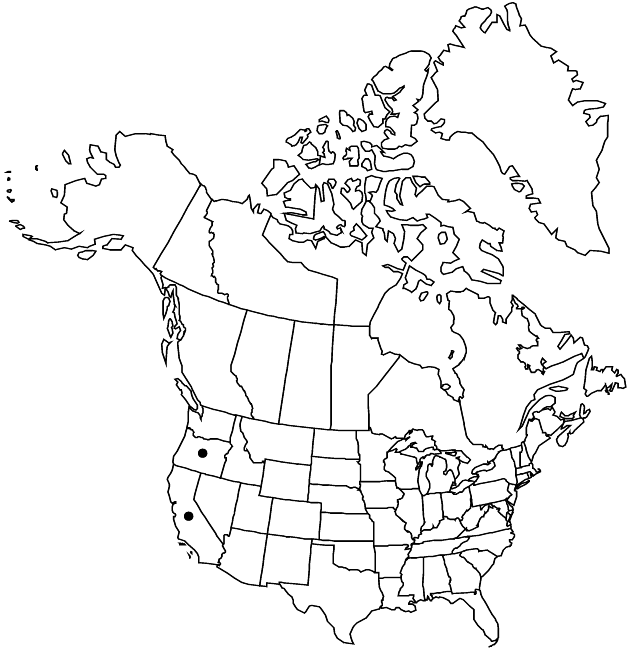Centromadia fitchii
Man. Bot. San Francisco, 197. 1894.
Common names: Fitch’s spikeweed
Endemic
Basionym: Hemizonia fitchii A. Gray in War Department [U.S.], Pacif. Railr. Rep. 4(5): 109. 1857
Plants 5–50 cm. Leaves densely villous or hirsute, stipitate-glandular (glands yellow, brown, or black). Involucres 5–10 mm. Anthers reddish to dark purple. Pappi of 8–12 narrowly oblanceolate to linear scales. 2n = 26.
Phenology: Flowering May–Nov.
Habitat: Grasslands, ± alkaline plains, vernal pool edges and beds, disturbed sites (e.g., fallow fields), open woodlands, sometimes on serpentine
Elevation: 0–1000 m
Discussion
Centromadia fitchii occurs widely in northern and central California (except deserts) and southwestern Oregon and has putatively introduced populations in southwestern California. Unlike most other members of Centromadia, C. fitchii often occurs in upland, presumably well-drained sites. Putative natural hybrids with C. parryi subsp. rudis have been noted (e.g., D. D. Keck 2573, UC, from San Joaquin Co., California).
Selected References
None.
Lower Taxa
None.
... more about "Centromadia fitchii"
introrse +
connate +
herbaceous +
scarious +
absent +
hirsute +
papillate +
continuous +
decurrent +
linear to linear-elliptic +
oblanceolate +
winged;ribbed;winged;ribbed +
1;15 +
stigmatic +
absent +
Fitch’s spikeweed +
zygomorphic +
yellow +
monomorphic +
dimorphic +
staminate +
absent +
staminate +
straight +
distinct +
proximal +
1;5 +
bisexual +
dispersed +
singly +
Grasslands, ± alkaline plains, vernal pool edges and beds, disturbed sites (e.g., fallow fields), open woodlands, sometimes on serpentine +
discoid +
singly +
indeterminate +
surrounding +
urceolate;obconic +
cauline +
deltate +
2-carpellate +
inferior +
attached +
anatropous +
persistent +
falling +
absent +
tough +
thick +
absent +
connate +
persistent +
distinct +
falling +
absent +
unequal +
1-2-pinnatifid +
sessile +
Man. Bot. San Francisco, +
1894 +
pistillate +
absent +
fertile +
compressed +
paleate +
setulose +
flat;convex +
fibrous +
exalbuminous +
modifed +
Endemic +
alternate +
2-branched +
papillate +
absent +
Centromadia fitchii +
Centromadia +
species +
cylindric +
equaling +
shorter +
annual +
